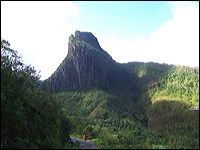Hundreds of deep volcanic tremors shook Mt. Kelud - tenfold the normal number - and its crater lake was the hottest since the mountain was put on high alert last month, said Surono, a senior government volcanologist who goes by a single name.

|
| ©Unknown |
| Hundreds of deep volcanic tremors shook Mt. Kelud - tenfold the normal number - and its crater lake was the hottest since the mountain was put on high alert last month (indoinside.com) |
"Kelud is entering its critical phase," Surono said in a telephone interview, indicating that an eruption could occur at any time.
In 1990, Mt. Kelud killed more than 30 people and injured hundreds. In 1919, a powerful explosion that could be heard hundreds of miles away destroyed dozens of villages and killed at least 5,160.
On Thursday, police went door-to-door and used megaphones to order villagers to flee to tent camps. Authorities ordered more than 100,000 people to leave vulnerable areas two weeks ago, but many disobeyed the instruction or had returned home to tend to crops and farm animals.
An underground reservoir of magma is pushing up to the surface, but is being blocked by sediment from the 1990 eruption, said scientist Mohammad Hendrasto. That intense pressure could result in "the most horrifying eruption in Kelud's history," he said.
Indonesia, which has around 100 active volcanos spread across 17,500 islands, sits on the so-called "Ring of Fire" - a series of fault lines stretching from the Western Hemisphere through Japan and Southeast Asia.



Reader Comments
to our Newsletter